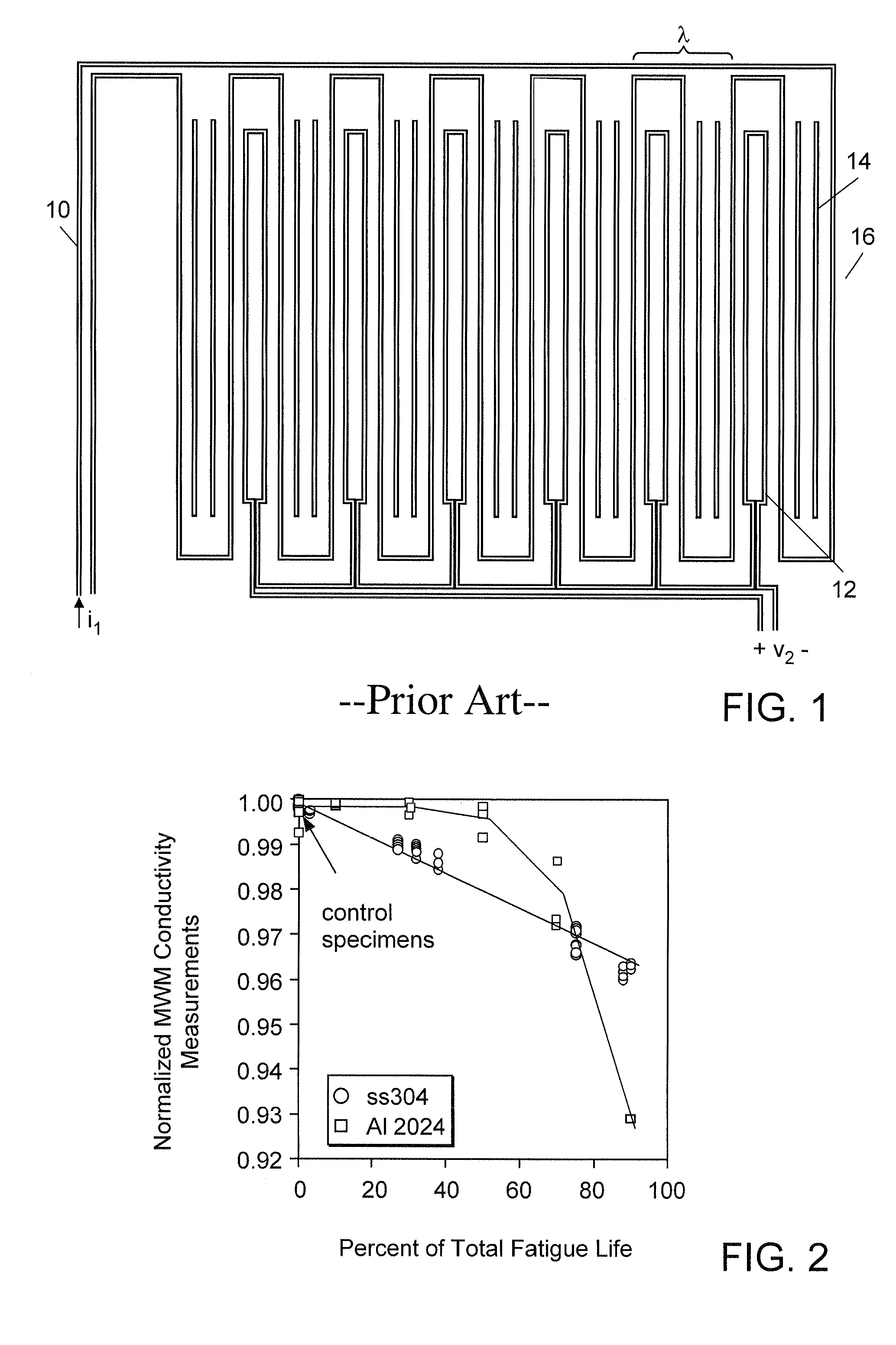Primary windings having multiple parallel extended portions
a technology of parallel extended portions and primary windings, which is applied in the field of non-destructive materials characterization, can solve the problems of increasing complexity and continuing high priority problems, escalating costs, and accumulation of fatigue damage in critical structural members of aging aircraft, so as to improve the depth of sensitivity, eliminate many undesired behaviors, and promote accurate modeling of the response
- Summary
- Abstract
- Description
- Claims
- Application Information
AI Technical Summary
Benefits of technology
Problems solved by technology
Method used
Image
Examples
Embodiment Construction
[0087]A description of preferred embodiments of the invention follows.
[0088]To safely support life extension for aging structures and to reduce weight and maintenance / inspection costs for new structures requires both rapid and cost effective inspection capabilities. In particular, continuous monitoring of crack initiation and growth requires the permanent mounting of sensors to the component being monitored and severely limits the usefulness of calibration or reference standards, especially when placed in difficult-to-access locations on aging or new structures.
[0089]Permanent and surface mounting of conventional eddy-current sensors is not performed. One reason for this is the calibration requirements for the measurements and another is the variability between probes. Conventional eddy-current techniques require varying the proximity of the sensor (or lift-off) to the test material or reference part by rocking the sensor back and forth or scanning across a surface to configure the ...
PUM
| Property | Measurement | Unit |
|---|---|---|
| diameter | aaaaa | aaaaa |
| diameter | aaaaa | aaaaa |
| elastic stress concentration | aaaaa | aaaaa |
Abstract
Description
Claims
Application Information
 Login to View More
Login to View More - R&D
- Intellectual Property
- Life Sciences
- Materials
- Tech Scout
- Unparalleled Data Quality
- Higher Quality Content
- 60% Fewer Hallucinations
Browse by: Latest US Patents, China's latest patents, Technical Efficacy Thesaurus, Application Domain, Technology Topic, Popular Technical Reports.
© 2025 PatSnap. All rights reserved.Legal|Privacy policy|Modern Slavery Act Transparency Statement|Sitemap|About US| Contact US: help@patsnap.com



